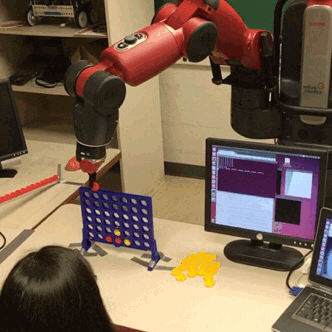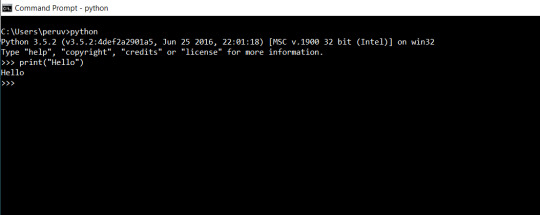#rethinkrobotics
Explore tagged Tumblr posts
Photo

Australian roboticist, MIT Professor, former Director MIT Computer Science and Artificial Intelligence Laboratory, Rodney Brooks with his Rethink Robotics creation Baxter discussing man’s future on the planet for Boston Magazine a while back. Now opener on Wonderful Machine’s search page.
2 notes
·
View notes
Text
【IoTreport】コーヒーをドリップするロボットに感動!無人の”変なカフェ”体験 #179
変なカフェ渋谷店 RPAの先駆け!働くロボットはスゴイ!
#IoT #RPA #Hennacafe #HIS #robot #変なカフェ #RethinkRobotics #Sawyer #Poursteady #バリスタマシン #本格ドリップコーヒー #Tokyo #渋谷 (more…)
View On WordPress
0 notes
Photo

Fun @ the Robot Block Party & HUBWeek today!!! #HUBweek #RobotBlockParty #CityOfBoston #AntiDesign #TrifectaEditions #CyrillEConan #SteezMagazine #NeonDream #RethinkRobotics #nuTonomy #BostonBruins #NHLBruins #BladesBruins #BostonLife (at Hubweek 2017)
#cityofboston#bostonbruins#bostonlife#robotblockparty#antidesign#hubweek#nhlbruins#nutonomy#steezmagazine#neondream#cyrilleconan#trifectaeditions#bladesbruins#rethinkrobotics
0 notes
Photo

Oh baxter, I've really missed you Buddy😊
0 notes
Text
How to Control Robots with Brainwaves and Hand Gestures
A system established at MIT enables a human manager to fix a robot’s errors utilizing gestures and brainwaves.
Photo: Joseph DelPreto/MIT CSAIL
Gettingrobots to do things isn’t really simple: Usually, researchers have to either clearly program them or get them to comprehend how people interact through language.
But exactly what if we could control robots more intuitively, utilizing simply hand gestures and brainwaves?
A brand-new system led by scientists from MIT’s ComputerScience and Artificial Intelligence Laboratory ( CSAIL) goals to do precisely that, permitting users to immediately appropriate robot errors with absolutely nothing more than brain signals and the flick of a finger.
Building off the group’s previous work concentrated on basic binary-choice activities, the brand-new work broadens the scope to multiple-choice jobs, opening brand-new possibilities for how human employees might handle groups of robots.
By tracking brain activity, the system can spot in real-time if an individual notifications a mistake as a robot does a job. Using a user interface that determines muscle activity, the individual can then make hand gestures to scroll through and choose the appropriate alternative for the robot to perform.
The group showed the system on a job where a robot moves a power drill to among 3 possible targets on the body of a mock aircraft. Importantly, they revealed that the system deals with individuals it’s never ever seen prior to, implying that companies might release it in real-world settings without requiring to train it on users.
“This work combining EEG and EMG feedback enables natural human-robot interactions for a broader set of applications than we’ve been able to do before using only EEG feedback,” states CSAIL Director Daniela Rus, who monitored the work. “By including muscle feedback, we can use gestures to command the robot spatially, with much more nuance and specificity.”
PhD prospect Joseph DelPreto was lead author on a paper about the job along with Rus, previous CSAIL postdoc Andres F. Salazar-Gomez, previous CSAIL research study researcher Stephanie Gil, research study scholar Ramin M. Hasani, and Boston University Professor Frank H.Guenther The paper will exist at the Robotics: Science and Systems (RSS) conference happening in Pittsburgh next week.
In most previous work, systems might normally just acknowledge brain signals when individuals trained themselves to “think” in really particular however approximate methods and when the system was trained on such signals. For circumstances, a human operator may have to take a look at various light screens that correspond to various robot jobs throughout a training session.
Not remarkably, such techniques are hard for individuals to deal with dependably, specifically if they operate in fields like building and construction or navigation that currently need extreme concentration.
Meanwhile,Rus’ group utilized the power of brain signals called “error-related potentials” (ErrPs), which scientists have actually discovered to naturally happen when individuals discover errors. If there’s an ErrP, the system stops so the user can fix it; if not, it continues.
“What’s great about this approach is that there’s no need to train users to think in a prescribed way,” states DelPreto. “The machine adapts to you, and not the other way around.”
For the job the group utilized “Baxter,” a humanoid robot from RethinkRobotics With human guidance, the robot went from selecting the appropriate target 70 percent of the time to more than 97 percent of the time.
To develop the system the group utilized the power of electroencephalography (EEG) for brain activity and electromyography (EMG) for muscle activity, putting a series of electrodes on the users’ scalp and lower arm.
Both metrics have some private drawbacks: EEG signals are not constantly dependably noticeable, while EMG signals can in some cases be hard to map to movements that are anymore particular than “move left or right.” Merging the 2, nevertheless, enables more robust bio-sensing and makes it possible for the system to deal with brand-new users without training.
“By looking at both muscle and brain signals, we can start to pick up on a person’s natural gestures along with their snap decisions about whether something is going wrong,” states DelPreto. “This helps make communicating with a robot more like communicating with another person.”
The group states that they might picture the system one day working for the senior, or employees with language conditions or minimal movement.
“We’d like to move away from a world where people have to adapt to the constraints of machines,” statesRus “Approaches like this show that it’s very much possible to develop robotic systems that are a more natural and intuitive extension of us.”
Source: MIT
New post published on: https://livescience.tech/2018/06/21/how-to-control-robots-with-brainwaves-and-hand-gestures/
0 notes
Text
ROBOTS Exhibition @ National Museum of Scotland
ROBOTS Exhibition @ National Museum of Scotland @NtlMuseumsScot @sciencemuseum @KingsCollegeLon @NaoRobot @RoboThespian @RethinkRobotics @EDINrobotics @NASAValkyrie @NASA #BipedalWalker #robots #science #terminator #nasa
A major new exhibition at the National Museum of Scotland will explore 500 years of humanity’s quest to re-imagine ourselves as machines. Developed by the Science Museum, Robots features a unique collection of over 100 robots, from the earliest automata to those from science fiction and modern-day research labs.
Looking at five different time periods, the exhibition considers the role of humanoid…
View On WordPress
#Bipedal Walker#Dr Tacye Phillipson#Edinburgh Centre for Robotics#NASA Valkyrie#national museum of scotland#Robotarium#Robots
0 notes
Text
A tweet
Walmart pilots a grocery-picking #robot to fulfill customers’ online orders https://t.co/6lF0BZtMCa by @sarahintampa via @TechCrunch #logistics pic.twitter.com/QlvzZqLvS4
— Rethink Robotics (@RethinkRobotics) August 6, 2018
0 notes
Text
【IoTinfo】本日オープンしたHISの「変なカフェ」渋谷1号店 #167
ロボットが働く「変なカフェ」が渋谷にオープン
#IoT #HIS #Robot #変なカフェ #Tokyo #渋谷 #RethinkRobotics #Sawyer #Poursteady #バリスタマシン #本格ドリップコーヒー (more…)
View On WordPress
0 notes
Text
Robots in homes, offices can be hacked: Study
![CDATA[
Researchers who warned half a dozen robot manufacturers in January about nearly 50 vulnerabilities in their home, business and industrial robots, say only a few of the problems have been addressed.
The researchers, Cesar Cerrudo and Lucas Apa of cybersecurity firm IOActive, said the vulnerabilities would allow hackers to spy on users, disable safety features and make robots lurch and move violently, putting users and bystanders in danger.
While they say there are no signs that hackers have exploited the vulnerabilities, they say the fact that the robots were hacked so easily and the manufacturers' lack of response raise questions about allowing robots in homes, offices and factories.
"Our research shows proof that even non-military robots could be weaponized to cause harm," Apa said in an interview.
"These robots don't use bullets or explosives, but microphones, cameras, arms and legs. The difference is that they will be soon around us and we need to secure them now before it's too late."
Some of the robot manufacturers defended themselves, saying they had fixed some or all of the issues raised.
Apa's comments come in the wake of a letter signed by more than 100 leading robotic experts urging the United Nations to ban the development of killer military robots, or autonomous weapons.
Apa, a senior security consultant, said that of the six manufacturers contacted, only one, RethinkRobotics, said some of the problems had been fixed. He said he had not been able to confirm that as his team does not have access to that particular robot.
A spokesman for Rethink Robotics, which makes the Baxter and Sawyer assembly-line robots, said all but two issues - in the education and research versions of its robots - had been fixed.
Apa said a review of updates from the other five manufacturers - Universal Robots of Denmark, SoftBank Robotics and Asratec Corp of Japan, Ubtech of China, and Robotis Inc of South Korea - led him to believe none of the issues he had raised had been fixed.
Asratec said that software released for its robots so far was limited to "hobby use sample programs", and it believed IOActive was pointing to security vulnerabilities in those. Software it planned to release for commercial use would be different, it said.
SoftBank Robotics said it had already identified the vulnerabilities and fixed them. Ubtech said it had "fully addressed any concerns raised by IoActive that do not limit our developers from programming" their robots.
Universal Robots did not respond to emailed requests for comment. Robotis Inc declined to comment.
The slow reaction by the robot industry was not surprising, said Joshua Ziering, founder of Kittyhawk.io, a commercial drone software company. "A new technology bursts on to the market and people fail to secure it," he said.
Cybersecurity experts said the robot vulnerabilities were alarming, and cyber criminals could use them to disrupt factories by ransomware attacks, or with robots slowed down or forced to embed flaws in the products they are programmed to build.
"The potential impact to companies, and even countries, could be massive," said Nathan Wenzler, chief security strategist at AsTech, a San Francisco-based security consulting company, "should an attacker exploit the vulnerability within the applications that control these robots."
Even in the home, danger lurks, said Apa, demonstrating how a 17-inch (43.18 cm) tall Alpha 2robot from Ubtech could be programmed to violently jab a screwdriver.
"Maybe it's small and it's not really going to hurt right now, but the trend is that the robots are going to be more powerful," he said. "We tested industrial ones which are really heavy and powerful, and some of the attacks work with them."
Apa and Cerrudo released their initial findings in January.
This week, they released details about the specific vulnerabilities they found, including one case where they mix several of those vulnerabilities together to hijack a Universal Robot factory robot, making it lurch about and be a potential threat.
]]>
0 notes
Link
Rethink"s workplace robot is now smarter and easier to train #automation #rethink #rethinkrobotics #robots #sawyer #Moraltime
0 notes
Text
AGS&B on Twitter
techreview_es: #LoMásLeído | El #robot #Sawyer de RethinkRobotics acaba de volverse mucho más inteligente … https://t.co/ehcOVNMELx Check out the entire post on https://twitter.com/agsb_bilbao/status/832848461452165120
0 notes
Photo

did you spill these blocks? did you spill an entire bucket of blocks in front of some very important people? or are you demonstrating your abilities to pick up blocks? either way, I'm not impressed.
44 notes
·
View notes
Text
Baxter works 2,160 straight hours at Rodon Group
A Baxter robot recently worked 2,160 straight hours at the Hatfield, Pa. location of Rodon Group. At this injection molding factory, Baxter was responsible for picking plastic parts off the line, placing them in a box, and separating them with inserts.
Read the USA Today article here.
1 note
·
View note
Photo

@SupplyChain2030: RT @Ronald_vanLoon: The digital bank of the future by @KPMG | Read more at: https://t.co/IpFSHczwMy #ArtificialIntelligence #AI #DigitalTransformation #Digital #Innovation #Driverless #Robotics #Industry40 #FinTech #Finance #RT Cc: @rethinkrobotics @firstweets @robohub https://t.co/etRxm0l7BJ
0 notes
Photo

Added Python to my PATH, CAN'T WAIT TO START CODING ON BAXTER NEXT SEMESTER!!
0 notes
Link
Rethink"s workplace robot is now smarter and… https://t.co/CuE1DP9k5v #automation #rethink #rethinkrobotics #robots #sawyer #Moraltime https://t.co/pQa6p8ics0
0 notes